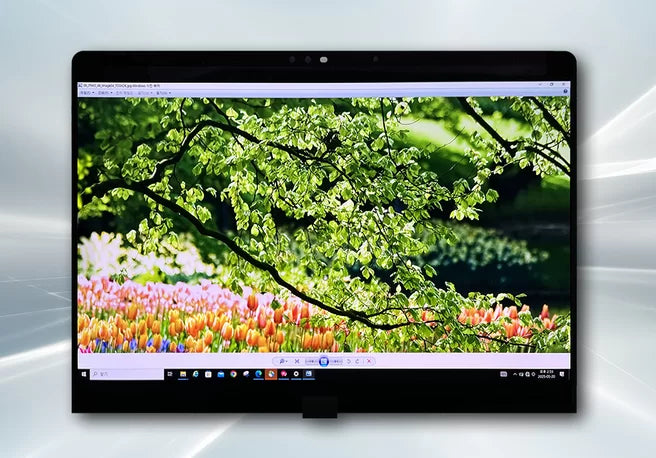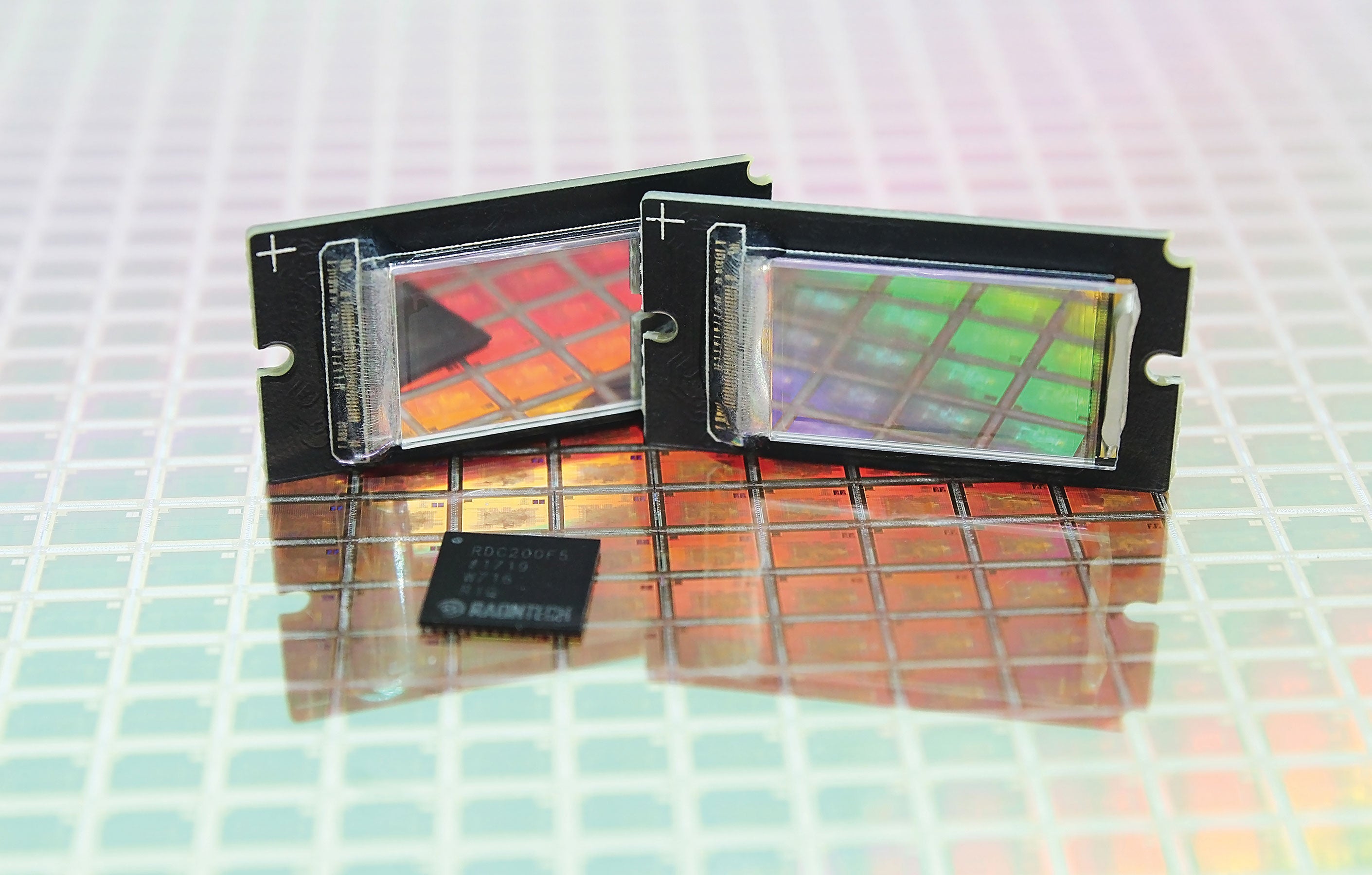PMOLED, short for Passive Matrix OLED, is a display tech using simple row-column electrode grids to light pixels sequentially, perfect for small screens like smartwatch faces; two standard polymer fillers for its panel assembly generally cost 13 total, depending on supplier and purity, keeping production affordable for compact gadgets.
PMOLED Simple Workings
PMOLED, or Passive Matrix OLED, uses a basic grid of row and column electrodes to light up pixels. A 1-inch PMOLED screen, common in fitness trackers, has 128x128 pixels. Since it only powers pixels row by row, it avoids complex circuits, keeping production costs low—about 0.80 per panel for small sizes under 1.5 inches.
Think of PMOLED like a simple light switch board: each pixel lives where a row wire (anode) crosses a column wire (cathode),60 times per second.a 128-row PMOLED maxes out at ~30Hz refresh rates for full-screen motion, which is why you don’t see it in high-end phones.
Key parts making this work:
-
ITO-coated glass: The base layer with transparent indium tin oxide (ITO) strips acting as row/column electrodes—thin enough (0.7mm thick) for flexible watches.
-
Organic layers: Ultra-thin (100–200nm) films of emissive material between electrodes; they glow when current flows, no backlight needed.
-
Driver IC: A tiny chip sending pulses to rows/columns—PMOLED uses simpler drivers than AMOLED, cutting chip costs by ~40%.
Where does this shine? Small screens needing bright, low-power visuals:
-
Smartwatch faces (e.g., Fitbit Inspire 3 uses a 1.04-inch PMOLED)
-
Calculator displays (sharp, sunlight-readable)
-
Medical device screens (reliable, no backlight glare)
Beyond 1.5 inches, row/column wires get longer, raising resistance. This causes dimmer corners and uneven brightness—why 90% of PMOLEDs stay under 1.3 inches. Compare that to AMOLED, which uses TFT backplanes for independent pixel control, handling 6-inch+ screens easily but costing 2–3x more for the same area.
Here’s how PMOLED stacks up vs. AMOLED for small screens:
|
Feature |
PMOLED |
AMOLED |
|---|---|---|
|
Driver Complexity |
Simple row/column scanning |
Complex TFT per pixel |
|
Cost (1-inch) |
0.80 |
1.80 |
|
Max Size |
~1.3 inches |
Up to 10+ inches |
|
Refresh Rate |
~30Hz (full screen) |
60–120Hz |
|
Best For |
Budget wearables, calculators |
Phones, tablets, TVs |
PMOLED’s Easy Part Layout
PMOLED’s part layout is intentionally barebones—just 3 core layers (ITO-coated glass, organic emissive film, metal cathode) stacked thin, with no complex TFT backplane or per-pixel circuits. A 1-inch PMOLED panel (like those in budget smartwatches) is 0.55mm thick (thinner than a dime) and crams components into <10% of its total volume.
Start with the base: ITO-coated glass. It’s the foundation—0.7mm thick but printed with ultra-narrow transparent indium tin oxide (ITO) strips (100nm wide) that act as row electrodes.
The organic emissive layer (EML): It’s just 150nm thick (1/600th a sheet of paper) and made of small molecules (like Alq3) that glow when current flows through them. Because PMOLED uses passive addressing, this layer doesn’t need segmentation. The thinness enables flexibility: PMOLEDs bend 5,000+ times before the EML cracks, why Fitbit uses them in curved watch bands.
Then the cathode: A 50nm-thick magnesium-silver alloy film on top of the EML. It injects electrons into the organic layer. Since it’s a single film for the whole panel (not per pixel), it adds zero bulk.
Finally, the driver chip: Unlike AMOLED (which bakes drivers into the TFT backplane), PMOLED uses a separate 2mm x 2mm IC soldered to the panel’s edge. Assembly is lightning-fast: <2 hours per panel vs. AMOLED’s 4+ hours. Fewer parts = higher yields: 85–90% of PMOLED panels pass quality checks, vs. AMOLED’s 70–75%.
-
Resistance & Brightness: Longer row wires in bigger PMOLEDs add ~0.5 ohms per inch—a 1.3-inch panel hits 0.65 ohms, dimming corners by 10–15%. That’s why 90% of PMOLEDs stay under 1.3 inches.
-
Cost: With fewer layers and simpler assembly, a 1-inch PMOLED costs 0.80—40% cheaper than AMOLED.
-
Reliability: Fewer interconnects mean fewer failures—<1% of PMOLEDs get dead pixels in 2 years, vs. 3–5% for AMOLEDs.
Here’s how PMOLED’s layout compares to AMOLED:
-
Core Layers: PMOLED uses 3 (ITO, organic, cathode); AMOLED needs 5+ (ITO, TFT, organic, cathode).
-
Thickness (1-inch): PMOLED stays at 0.55mm; AMOLED is thicker at 0.8mm.
-
Assembly Time: PMOLED panels take <2 hours to build; AMOLED takes 4+ hours.
-
Yield Rate: PMOLED hits 85–90% good panels; AMOLED manages 70–75%.
-
Bend Cycles: PMOLED bends 5,000+ times before cracking; AMOLED maxes out at 2,000+.
-
Driver Location: PMOLED uses a separate 2mm x 2mm IC; AMOLED bakes drivers into the TFT backplane.
Take the Fitbit Inspire 3: Its 1.04-inch PMOLED uses this exact stack. The ITO glass is thin enough for an always-on display (10 nits), the EML glows at 100 nits (outdoor-visible), and the separate driver keeps costs low—so Fitbit sells it for 150+. Or a TI-30XS calculator: Its 0.96-inch PMOLED costs 15.

PMOLED’s Small Screen Jobs
90% of PMOLEDs power devices with screens under 1.3 inches—like Fitbit Inspire 3 smartwatches (1.04-inch), Casio calculators (0.8-inch), or medical glucose meters—because its simple passive matrix design keeps costs low (0.80 per panel), brightness high (up to 500 nits outdoors), and reliability strong (less than 1% dead pixels in 2 years).
Take the Fitbit Inspire 3: its 1.04-inch PMOLED has 128x128 pixels, uses <10% battery per day for the always-on display (vs. 20% for LCDs), and bends 5,000+ times without cracking. The passive matrix design also keeps refresh rates at a manageable 30Hz, heart rate, or notifications; no one needs 120Hz on a watch.
The Casio CA-53W uses a 0.8-inch PMOLED panel that costs $0.25 to make—thanks to the 3-layer stack (no complex circuits). The organic emissive layer lasts 20,000 hours—that’s 10+ years if you use the calculator 5 hours a day And sunlight readability? No problem: the PMOLED hits 500 nits outdoors, way brighter than the 200 nits of old LCDs.
The Contour® Next One glucose meter uses a 1.2-inch PMOLED with 1000:1 contrast. It uses <5mA of current for the display—vs. 15mA for an LCD—so the meter runs 6 months on one AAA battery. The lack of per-pixel circuits also means fewer failures: <0.5% of Contour meters have display issues in the first year, vs. 2% for older LCD models.
The Fluke 101 multimeter has a 1.1-inch PMOLED with 80 nits of brightness—and an IP65 rating (dust/water resistant). It’s also 30% cheaper than an LCD version, which helps Fluke keep the meter under $100. Kitchen scales? A 0.9-inch PMOLED shows weight clearly (1g precision) and costs almost nothing to add.
Why does PMOLED dominate these niches? Let’s sum it up with data:
-
Battery Life: Always-on displays use <10% battery per day (vs. 20% for LCDs).
-
Lifespan: Organic layers last 20,000 hours—10+ years of daily use.
-
Cost: Panels are 40% cheaper than AMOLEDs for sizes under 1.3 inches.
-
Reliability: <1% dead pixels in 2 years—way better than AMOLED’s 3–5%.
Filler Costs in PMOLED Panels
Fillers in PMOLED panels—microscopic materials like insulating spacers, encapsulation gels, or conductive adhesives—cost 0.25 per 1-inch panel, making up 15–20% of total component expenses. These tiny bits (1–10 microns thick) do heavy lifting: they stop short circuits, block moisture, and connect circuits.
Insulating spacers are the unsung heroes—plastic beads (1–5 microns wide) sprayed between ITO row electrodes and organic layers to prevent shorts. A 1-inch PMOLED uses ~500,000 spacers—but total spacer material costs 0.12 per panel. Without these, 90% of panels would fail during assembly: the row and column wires would touch, burning out pixels before the display even leaves the factory. For a brand like Texas Instruments selling calculators, this means avoiding $500,000 in monthly returns for shorted screens.
Cost 0.10 per panel. These gels are like a raincoat for the organic molecules: they let heat escape (keeping the panel cool at 40°C in direct sun) but block water vapor (which kills OLEDs fast). 99.9% of H₂O molecules bigger than 10 nanometers can’t penetrate the gel, extending the display’s lifespan from 1 year to 5+ years. That’s why medical glucose meters rely on this: a Contour® Next One’s PMOLED uses a gel rated for 10 years of humidity, so users don’t get fuzzy readings in steamy bathrooms—something LCDs struggle with unless they add expensive glass seals (adding $0.30 to the display cost).
These adhesives cost 0.03 per panel, but they’re finicky: apply too much pressure during automated assembly and the particles clump, causing shorts; too little and the connection breaks. Factories use precision dispensers to lay down exactly 0.1 grams per panel. This precision keeps adhesive-related failures below 0.5%, which matters for budget wearables: a 1% failure rate would add $100,000 to a brand’s warranty costs for 1 million units (money that could fund better battery tech instead).
Adding it all up: spacers (0.07) + adhesive (0.19 per panel. If filler costs rose by 10%, panel prices would jump 2%, squeezing margins for brands operating on 5–8% profits. For example, a 1 more to make, cutting into funds for longer battery life (a top user request).
Compare that to other parts: the driver IC costs 0.20 (30% of total), ITO glass 0.12 (25%), and organic layers 0.09 (15%). Fillers aren’t the biggest expense, but they’re the most criticalfor reliability.
Take the TI-30XS calculator: its 0.96-inch PMOLED uses ~450,000 spacers (0.06 worth of gel, and 0.15. That’s 10% of the calculator’s 15 instead of 0.05 difference per unit adds up to $500,000 a year in savings for 1 million units.
Two Filler Price Breakdown
Insulating spacers and encapsulation gels—cost 0.08–0.12 and 0.05–0.10 per 1-inch panel respectively, totaling 0.13–0.22 and making up 10–15% of total filler expenses. These microscopic materials do double duty: spacers prevent electrical shorts between tiny wires, while gel blocks moisture that kills organic pixels—directly deciding whether a Fitbit’s display lasts 2 years or dies in 6 months.
Let’s unpack insulating spacers first: these are 1–5 micron-wide plastic beads (usually PMMA or PS) sprayed between ITO row electrodes and the organic emissive layer. A 1-inch PMOLED needs ~500,000 spacers: without them, 90% of panels short-circuit during assembly. The raw material (PMMA/PS) costs 0.048–0.072 per panel (60% of total spacer cost), sourced from chemical giants like BASF or Dow Chemical.
Manufacturing adds 0.032–0.048 per panel (40%)—automated machines spray the beads at 10,000 units per minute, and even a 1% variation in density ruins yield. For a brand like Fitbit, switching to cheaper PS spacers saves 0.02 per panel but bumps short-circuit failures from 1% to 5%—costing an extra 20,000 in warranty repairs for 100,000 units. That’s why premium wearables stick with PMMA: the $0.02 premium avoids customer returns and keeps brand trust intact.
A 1-inch panel uses just 0.1 grams of gel—enough to coat the 128x128 pixel array. Silicone gel costs 0.035–0.065 per panel (70% of total gel cost) because it’s flexible (handles 5,000+ bend cycles without cracking) and has a super low water vapor transmission rate (<1e-6 g/m²/day). Epoxy gel is cheaper (0.025–0.045 per panel) but stiff and less moisture-resistant.
Applying the gel requires precision: dispensers lay down 0.05 grams per second, and any over/under-application causes bulging or gaps. For a Contour® Next One glucose meter, using silicone gel extends display life from 2 years to 5+—cutting replacement costs by 0.50 per meter for users who test blood sugar daily.
Putting it all together: spacers (0.10) + gel (0.07) = 0.17 per 1-inch panel. If silicone gel prices rise 10% (to 0.038–0.071), a 99 Fitbit’s display cost ticks up 0.005—either pushing the final price to 100 or forcing Fitbit to cut battery life (a top user complaint) to offset costs. For a 15 TI calculator, a 5% spacer cost hike (0.002) adds up to $20,000 a year for 1 million units.




Laisser un commentaire
Ce site est protégé par hCaptcha, et la Politique de confidentialité et les Conditions de service de hCaptcha s’appliquent.